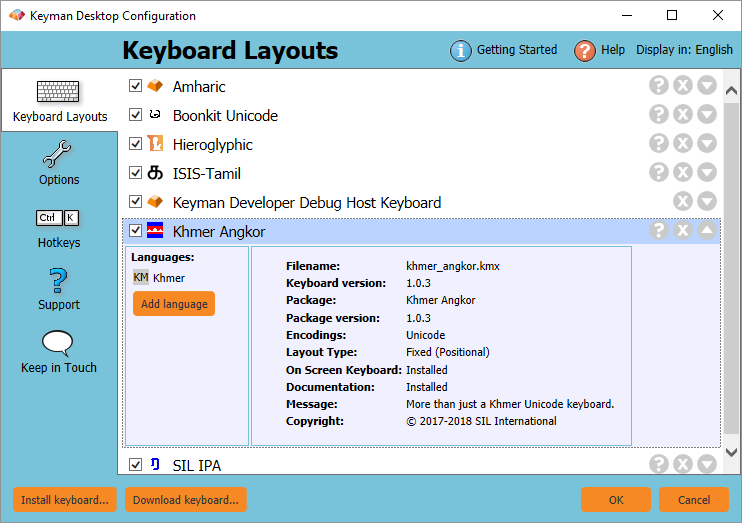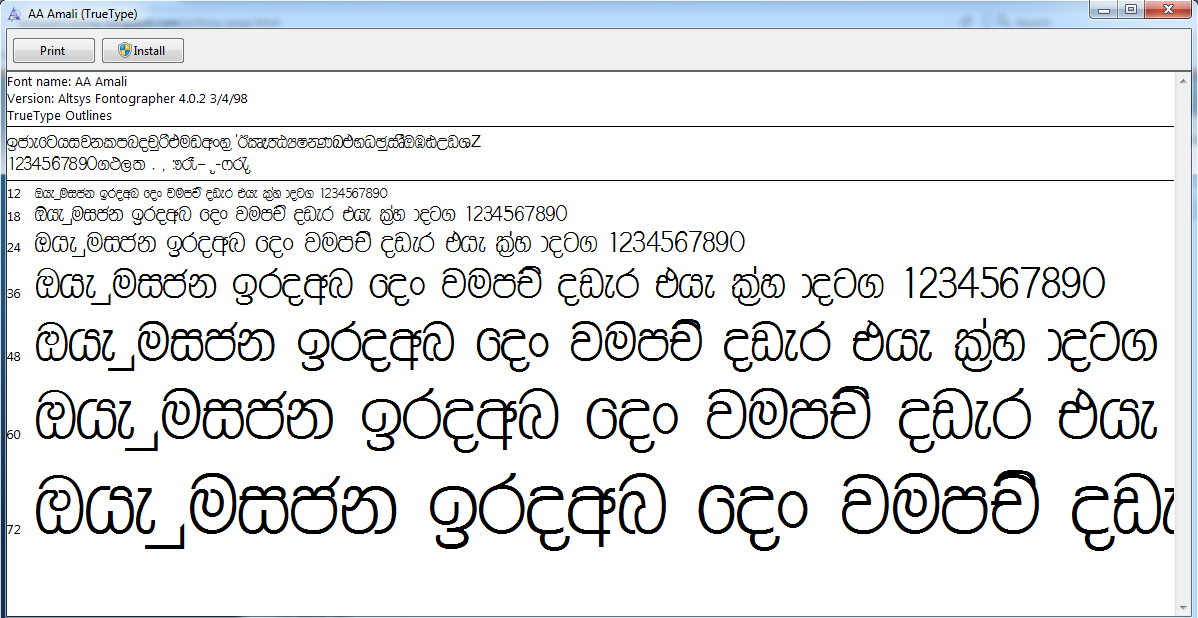


This high contrast type gradually replaced the monolinear type as the preferred style and continues to be used in the present day. During the second half of the 19th century, during the colonial period, a new style of Sinhala letterforms emerged in opposition to the monolinear and geometric form that used high contrast and had varied thicknesses.


The Dutch created type was monolinear and geometric in fashion, with no separation between words in early documents. The resulting type followed the features of the native Sinhala script used on palm leaves. In 1736, the Dutch were the first to print with Sinhala type on the island. Modern Sinhalese emerged in the 13th century and is marked by the composition of the grammar book Sidat Sangara. For instance, the Buddhist literature of the Theravada- Buddhists of Sri Lanka, written in Pali, used Sinhala script. By the 9th century CE, literature written in the Sinhala script had emerged and the script began to be used in other contexts. Subsequently, Medieval (and modern) Sinhalese resemble the South Indian scripts. Medieval Sinhalese, which emerged around 750 AD, is marked by very strong influence from the Grantha script. It has caused debate as to whether Ceylonese Brahmi influenced Brahmi in the indian mainland. Pottery from the 6th century BCE has been found in Anuradhapura with lithic Brahmi inscriptions written in Prakrit or Sinhala Prakrit. It developed in a complex manner, partly independently but also strongly influenced by South Indian scripts at various stages, manifestly influenced by the early Grantha script. The Sinhala script is a Brahmi derivate and was thought to have been imported from Northern India around the 3rd century BCE. The core set of letters forms the śuddha siṃhala alphabet (Pure Sinhala, ශුද්ධ සිංහල), which is a subset of the miśra siṃhala alphabet (Mixed Sinhala, මිශ්ර සිංහල). Sinhala letters are classified in two sets. The Sinhala script is an abugida written from left to right. It is also related to the Grantha script. The Sinhalese Akṣara Mālāva, one of the Brahmic scripts, is a descendant of the Ancient Indian Brahmi script. The Sinhala script ( Sinhala: සිංහල අක්ෂර මාලාව, romanized: Siṁhala Akṣara Mālāva), also known as Sinhalese script, is a writing system used by the Sinhalese people and most Sri Lankans in Sri Lanka and elsewhere to write the Sinhala language as well as the liturgical languages Pali and Sanskrit.


 0 kommentar(er)
0 kommentar(er)
